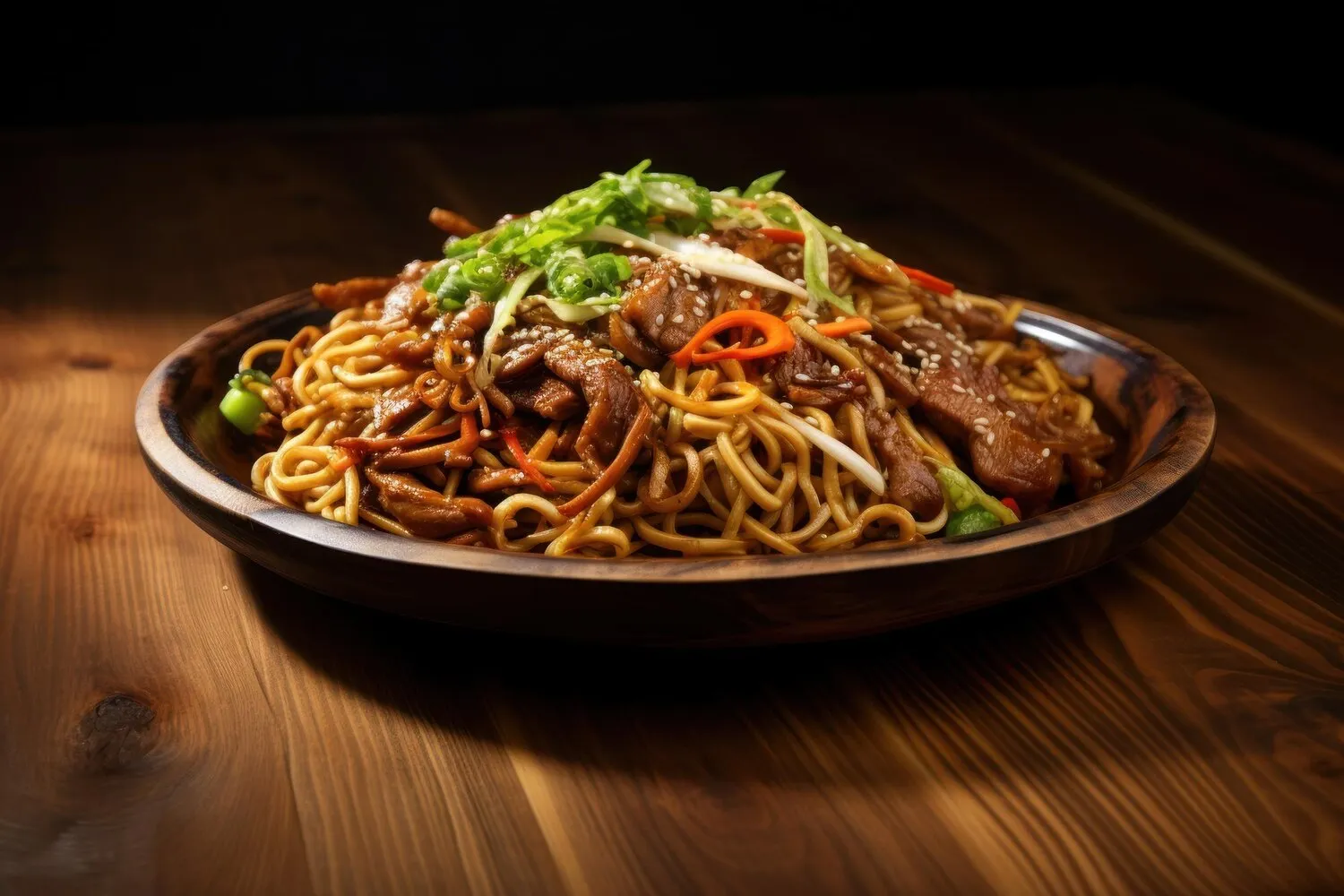
Yakisoba
Traditional stir-fried noodles with vegetables and your choice of protein (chicken, beef, shrimp, or vegetarian).
Nutrition Facts
* The % Daily Value (DV) tells you how much a nutrient in a serving of food contributes to a daily diet. 2,000 calories a day is used for general nutrition advice.
Yakisoba emerged in Japan during the early 20th century, likely influenced by Chinese chow mein brought by immigrants. It gained popularity as a street food and festival staple, offering an affordable and satisfying meal. The dish evolved with local ingredients and preferences, solidifying its place in Japanese cuisine.
Yakisoba is deeply embedded in Japanese popular culture, particularly as a beloved food stall item at festivals and events. It represents a quick, affordable, and communal eating experience.
Festival Food Staple
Yakisoba is almost always present at Japanese festivals (matsuri), served from food stalls alongside other popular dishes like takoyaki and okonomiyaki. It's a quintessential part of the festival experience.
Everyday Meal
Outside of festivals, yakisoba is a common weeknight meal cooked at home, often using readily available ingredients. It is also a popular item on the menus of casual restaurants.
Pan-Yakisoba
A variation called 'pan-yakisoba,' where yakisoba is served inside a hot dog bun, is popular in certain regions of Japan, showcasing the dish's adaptability and affordability.
Yakisoba offers a savory and umami-rich flavor profile, balanced with sweetness and slight tanginess. The textures range from the chewy noodles to the crisp-tender vegetables and the savory protein.
The base flavor comes from yakisoba sauce, a blend of Worcestershire sauce, soy sauce, oyster sauce, ketchup, and other seasonings, creating a complex umami and slightly sweet taste. The stir-frying process imparts a subtle smoky flavor. Common ingredients include thinly sliced pork (often pork belly), cabbage, carrots, onions, and dried seaweed flakes (aonori) for garnish, adding vegetal sweetness and oceanic notes. Benishoga (pickled ginger) provides a sharp, palate-cleansing contrast. The protein, whether chicken, beef, shrimp, or tofu, contributes its unique flavor and texture.
Noodle Selection
Use fresh yakisoba noodles, if available. If using dried noodles, cook them according to package directions but slightly undercook them, as they will continue to cook during the stir-frying process.
Sauce Adjustment
Taste the yakisoba sauce before adding it to the noodles and adjust the sweetness or savoriness to your liking. You can add a touch of honey or brown sugar for extra sweetness, or soy sauce for a saltier flavor.
High Heat Cooking
Cook yakisoba over high heat to ensure the noodles and vegetables are properly stir-fried, preventing them from becoming soggy. A wok is ideal, but a large skillet will work as well.
Ingredient Preparation
Prepare all ingredients before starting to cook. This is called 'mise en place' and is critical for successful stir-frying. Chop vegetables and protein into bite-sized pieces, and have the sauce readily available.
Don't Overcrowd the Pan
Cook the yakisoba in batches if necessary to avoid overcrowding the pan. Overcrowding lowers the pan temperature and results in steamed, not stir-fried, ingredients.
Explore additional Noodle Dish dishes and restaurants
Explore Noodle DishDiscover top dining spots and culinary experiences in Goiânia.
Explore GoiâniaLearn more about the food culture, restaurant scene, and culinary heritage of Brazil.
Explore Brazil